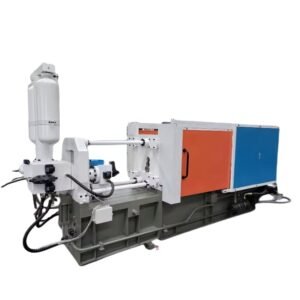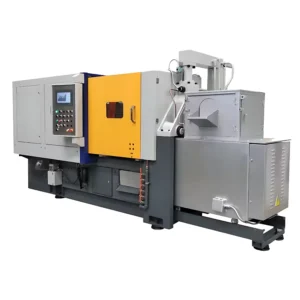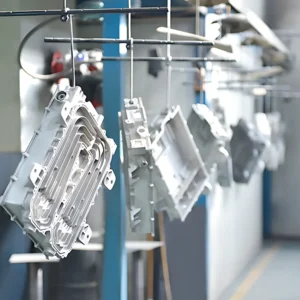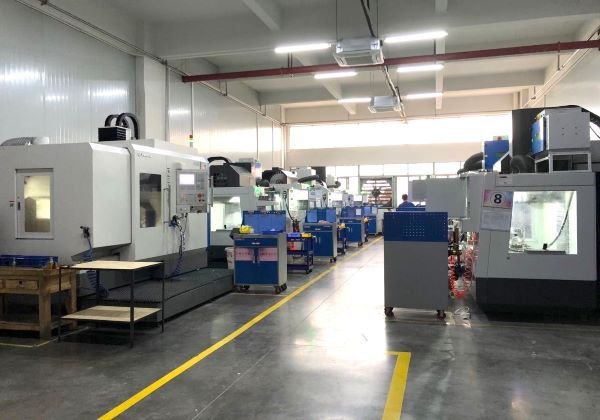A CNC machine, known as a Computer Numerical Control machine (CNC machine), is like a super-precise computer-controlled carver. All you need to do is draw the pattern or design you want on your computer, and the CNC machine automatically cuts or carves it out of wood, metal, or other materials with precision.
Read the article below to familiarize yourself with the different types of CNC machines. From discussing its benefits to the different tools available, this article will provide you with a comprehensive breakdown of all the information. Let’s Begin!
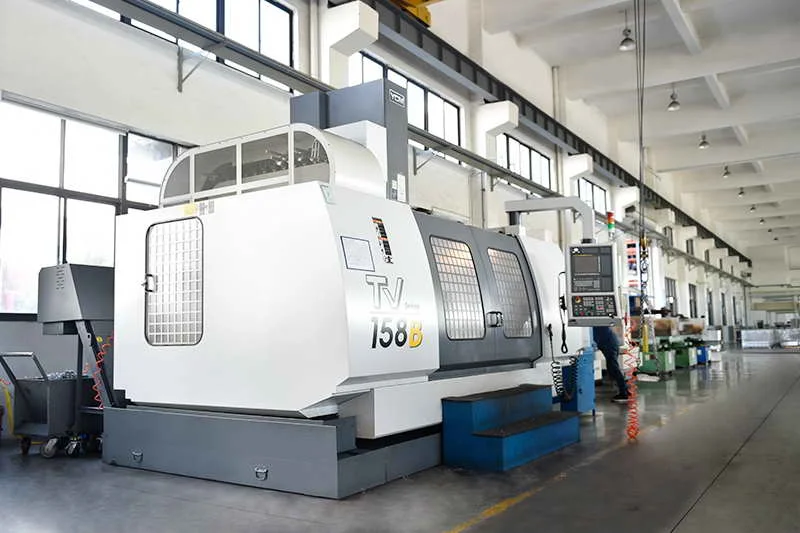
What is a CNC Machine?
CNC machines are a set of manufacturing equipment of different shapes, such as mills, shapers, slotters, etc. According to the CNC machine definition, computer numeric control (CNC) technology guides these machines to manufacture complex products.
During CNC machining, a computer program directs the actions of the machines using predefined instructions. The machines perform actions such as turning, drilling, or milling to design a product. Machining parameters are defined using codes (g-code and m-code) to ensure inch-perfect accuracy, precision, and efficiency.
Additionally, the CNC machines offer excellent compatibility. It allows you to design products using metal, wood, plastic, or composite materials. Now that you are aware of what a CNC machine is, let’s take a look at the benefits it provides.
Advantages of CNC Machine
A product as revolutionary as a CNC machine is bound to take the manufacturing world by storm. From designing complex products to offering greater material compatibility, here are the advantages of CNC machines:
- Accuracy and Precision
Arguably, the biggest advantage of CNC machining has been increased accuracy and precision. No matter how complex a design, with the correct instructions, a CNC machine ensures pin-point accuracy.
Additionally, the machines also provide precision and tolerance. So now you can design a product a million times without losing accuracy. Lastly, there is never a worry about human error or a lack of effort.
- Fast and Efficient
The predefined instructions ensure faster product design and greater manufacturing efficiency. However, the exact type of CNC and the complexity of the product design play a crucial role in achieving efficiency.
- Cost-effective
You pay a high initial investment cost while buying the machine. However, its operational cost is low. Additionally, the increase in your output rate, no human error, and low production costs make it extremely cost-effective. Lastly, what you pay for the training is very little, as much of it can be accessed online.
- Advanced Capabilities
When the purpose is to ensure efficiency, a CNC machine can never go wrong. It provides you with the ability to use different tools to perform different actions. No other technology or human work can achieve the advanced precision provided by this sophisticated software.
- Greater Material Compatibility
As stated earlier, CNC machines can work on a wide selection of materials, such as wood, plastic, various metals, and composite materials.
4 Main Steps of the CNC Machining Process
Now that you are aware of the advantages of CNC machines, let us dive into the complexities of the machining process. It is important to understand each step before deciding to invest in a CNC machine. The details of the four main steps are mentioned below:
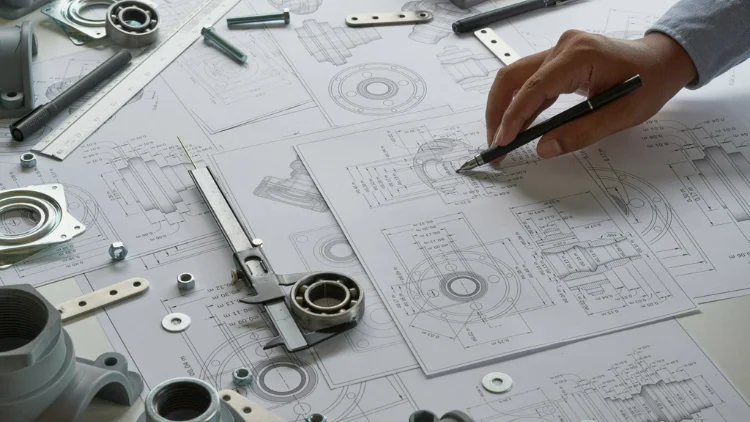
Step 1: Prepare a CAD Model
The process begins with the creation of a 2D or 3D design of the product. There are several advanced programs available for this purpose. Among the most widely used are AutoCAD and SolidWorks. These software programs make it possible for manufacturers to design inch-perfect model designs of products.
When designing a CAD model, it is important to keep in mind the details of the product. For instance, the CAD model must show the operator the tolerance, construction lines, threads, and other necessary features. Only then can machines design a perfectly accurate product.
Step 2: Conversion to CNC Compatible Format
The next step in the CNC machining process involves converting the CAD model into machine-readable form. CNC machines are unable to understand the 2D or 3D designs made in software. So, to convert it to a CNC-compatible format, manufacturers can use CAM software like AutoCAD, Fusion 360, etc.
Once it is translated into a CNC-compatible format, the CNC machine knows all the perimeters it needs. The parameters include rotational and linear movement, cutting sequence, toolpath, workpiece, machine speed, etc.
Step 3: Setup Execution
The step of setup and execution involves choosing the right type of CNC machine. The type of machine a manufacturer uses depends on the workpiece, the complexity of the product design, and the cost.
Step 4: Machine the Part
Once the setup is completed, the workpiece will go on top of the machine. The machine operator will attach the necessary cutting tools and start manufacturing. This is the final part of the CNC machining process that is automated. However, the operators keep a check during the process to ensure the smooth operation of the machine.
The Important Role of Machinists in CNC Machining
If the machine works on an automated process, then what is a CNC machine operator? Despite the automated process, machinists are critical to the CNC machining process. Below are the important roles played by them:
- Catering to anticipated and unanticipated faults
- Identifying product specifications
- Creating and Designing CAE models of the products
- Adjusting and aligning the cutting tools and other machining materials
- Installing, using, and detaching the CNC machine tools
- Keeping a check on the machining speed
- Inspecting and checking the finished products to identify flaws
- Making sure that a part has been aligned to the CAD Model
What is CNC Machine Used for?
A CNC machine is used for manufacturing products. The way these machines manufacture products differs depending on the product design. The basic use of a CNC machine is to subtract and remove parts of the workpiece to make the intended product. However, there are various specific uses of a CNC machine mentioned below:
CNC Drilling
The first use of a CNC machine is called CNC drilling. To perform this operation, manufacturers use a rotating cutting tool. That tool creates cylindrical holes in a stationary workpiece. These holes are used for part assembly purposes, such as accommodating machine screws and bolts.
However, CNC drilling can also be used for aesthetic purposes depending on the product design. There are several advantages of CNC machines used for drilling, such as higher accuracy, broader versatility, and greater reproducibility.
CNC Milling
You may be wondering, what is a CNC machine used for most commonly? The answer to that is CNC milling. During CNC milling, the machine uses the cutting tool to rotate and move along the axes.
The machine selectively removes parts of the workpiece to form the intended product shape. The more axes a CNC machine has, the greater the accuracy and the more complex the product it can design. In milling, the workpiece is mounted to a table, which rotates as per the predefined instructions to manufacture products.
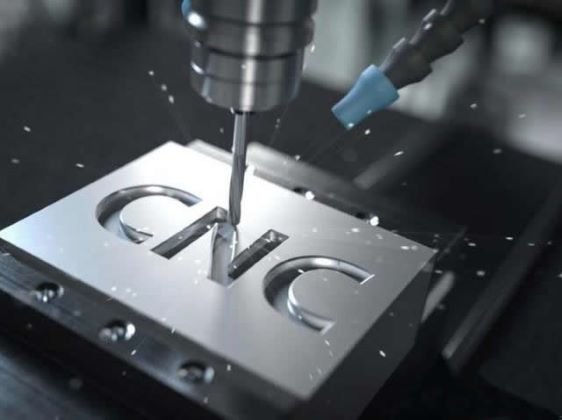
CNC Turning
The next operation a CNC machine is used for is called CNC turning. Compared to CNC milling, certain things are similar. Firstly, CNC turning also uses the subtractive method of removing parts of the workpiece to give shape to the product. However, unlike CNC milling, the CNC turning process involves a turning center known as a lathe. The lathe stays secured while the workpiece rotates against it at high speeds. The dual CNC turning machine ensures that the single-point cutting tool shapes the workpiece precisely.
CNC Grinding
A rotating grinding wheel is attached to the CNC machine while it is being used for CNC grinding. The wheel cuts the workpiece as the workpiece grinds on it. Usually used for hard-fining of workpieces, CNC grinding is a key usage of a CNC machine.
CNC Broaching
CNC broaching cuts the workpiece by moving it along the z-axis. However, the x-axis movements determine the depth of the cut. As there is only one cutting direction, the return movement is idle.
Now that you are aware of what a CNC machine is used for, let’s explore its different types.
What are the Types of CNC Machines?
CNC machines are of various types. There is a specific machine for each process. For instance, to perform a turning action, a specific machine is used, called a CNC lathe machine. The ability of CNC machines to move or rotate at different axes distinguishes them. Given below are the most commonly used CNC machines, with details:
2-Axis CNC Machines
The first and most simple type of CNC machine is the one that operates on two axes. They are called 2-axis CNC machines. The two axes they operate on are the x-axis and the z-axis. In other words, the 2-axis machines can only operate vertically or horizontally. Hence, they are the simplest type of CNC machine.
There are three main types of 2-axis CNC machines: the vertical, the horizontal, and the gantry. The vertical machine moves itself on one axis and its head on the other axis. The horizontal machine has a table that moves on the x-axis, and the head moves on the y-axis. The gantry machine can move along two axes at once and, therefore, is the most commonly used type of 2-axis CNC machine
3-Axis CNC Machines
Next up, we have the 3-axis CNC machines. These machines are the most commonly used CNC machines on the market today. These machines can operate on three different axes: the x-axis, the z-axis, and the y-axis. Apart from moving on the linear axes, they also have the A, B, and C axes of rotation. These machines provide the manufacturers with the ability to cut in three directions at the same time.
However, due to the lack of rotation, these machines often face issues when put up against complex product designs. As there are only 3 directions of cutting possible, complicated product designs require greater axis compatibility. The 3-axis machines can perform all kinds of operations, such as milling, turning, drilling, tapping, and more.
4-Axis CNC Machines
The next type of CNC machine is the 4-axis machine. With the need for increased accuracy, rotation, and speed, the 4-axis CNC machines were developed. They are the most commonly used machines in industries that require the manufacturing of complex products and parts.
Firstly, the 4-axis CNC machine has a spindle that can travel along the three axes. To put it simply, it can move up and down, from one side to the other, and back and forth.
Moreover, the machine can rotate along both the X and A axes, providing much-needed rotation capability. Manufacturers do not need to move the workpiece for the 4-axis CNC machine to work.
Due to its greater axis movement, this machine provides far better accuracy, precision, and speed as compared to the previous two types of CNC machines. Hence, this machine is widely used for complex product designs and part manufacturing.
5-Axis CNC Machines
Last but not least, we have the most advanced version of a CNC machine, the 5-axis CNC machine. These machines are somewhat similar to the 4-axis machines, as they possess a spindle and a cutting tool.
However, unlike the 4-axis machines that only rotate on one of the axes, the 5-axis machines can rotate on two out of the three axes. Therefore, these machines are the most sophisticated types of CNC machines in the manufacturing industry today.
These machines can approach the workpiece from all directions. Manufacturers do not have to manually reposition the workpiece for the 5-axis machines to work. 5-axis CNC machines are seen as the most complete multi-axis CNC machines that can design all kinds of complex products with unmatched accuracy, precision, and speed.
Which Industry Will Need CNC Machine Tools?
Nowadays, almost all manufacturing industries require highly sophisticated manufacturing machines. Due to their precision, accuracy, and repeatability, CNC machines are a necessity for every industry out there today. However, some industries have used CNC machine tools far more than others. Given below are major industries that require CNC machine tools.
Aerospace
Aerospace is an industry where the error of the slightest margin can be the difference between life and death. Hence, the industry shows no compromise on the accuracy and repeatability of its components. Here, CNC machining provides the perfect solution, ensuring extreme precision standards.
Standards such as ±0.0001 tolerance are required to ensure the safety of extremely critical aeronautical parts. Only CNC machining can ensure these standards by creating everything from the simplest of products to highly complex parts.
Commercial
The commercial industry is a no-brainer. It requires high volumes of products while remaining competitive in their pricing. Hence, the commercial industry needs the flexibility of CNC machine tools to ensure a vast spectrum of product sizes and limitless shapes.
Moreover, this industry also uses a wide range of materials. Only the CNC machining process can provide compatibility with different materials, such as metal, wood, plastic, etc.
Electronics
The electronic industry has seen a massive shift in its product design over the past decade. Almost every product has been miniaturized to make it more compatible and convenient for use. This has made CNC machine tools a necessity in electronics manufacturing.
Medical
In the medical industry, the slightest equipment inaccuracy can be the reason for a fatal mishap. Therefore, the medical industry needs CNC machine tools to ensure the highest standards. Apart from accuracy and precision, the medical industry uses a wide range of delicate materials that only CNC machine tools have the compatibility for.
Now that you are aware of what are CNC machine tools and which industry needs them, let’s look at the best suppliers for CNC machine tools.
The various types and features of CNC machines will determine their price. Understanding the cost breakdown of CNC prototyping can be viewed by clicking here.
Which Supplier is Reliable?
Buying machining services is not an everyday chore, so you must understand the quality of service they can offer you before deciding which supplier to work with. A reliable supplier will provide you with detailed information about the machining process, including margins of error, performance evaluations, and other key factors, ensuring that you are well-informed about the quality of service.
Choosing a supplier ultimately depends on your personal preferences, but at China Foundry, we are committed to providing the highest quality machining services. With over 20 years of experience in the field, our CNC machining company can ensure that you receive the highest quality metal products at an affordable cost. Whatever your machining needs are, we look forward to serving you.
Conclusion
Choosing a machining service is an important decision that should be made after fully understanding the nature of machining services and the various advantages they can bring to your production line. Machining services are ideal for manufacturing complex products that meet your stringent quality requirements by ensuring greater precision and accuracy.
With the advancement of automation, the need for manual labor has been drastically reduced while ensuring higher productivity and lower error rates. If you are looking for machining services, don’t hesitate to contact us today, and let us help you with all of your machining needs.

